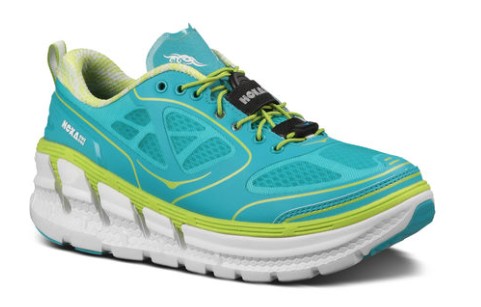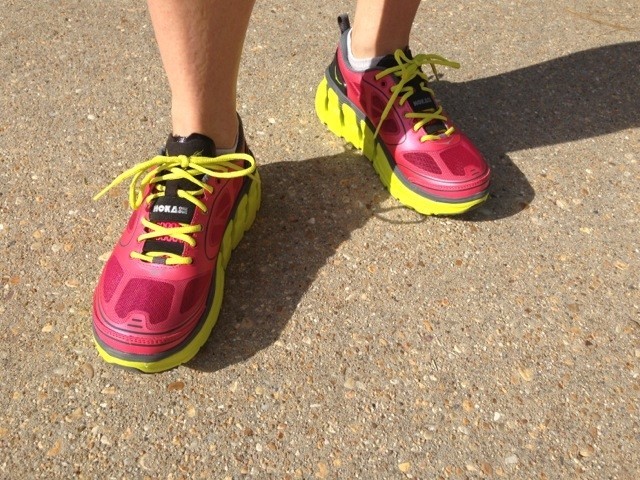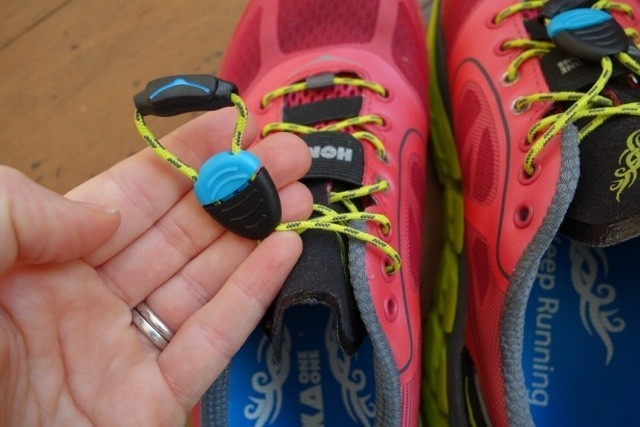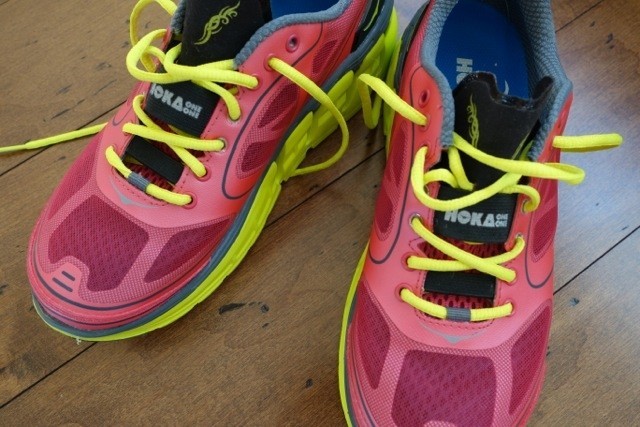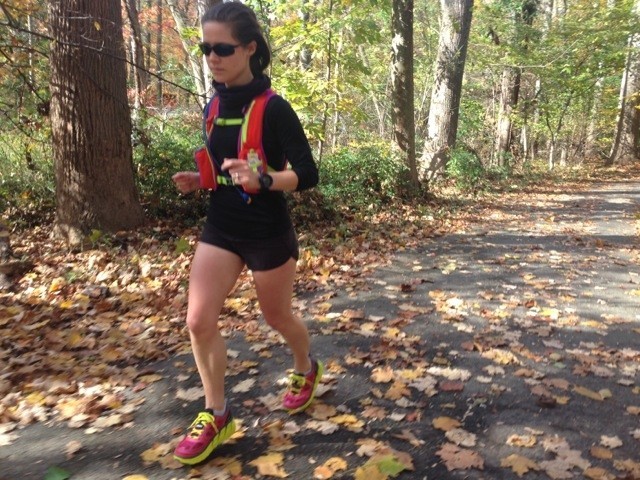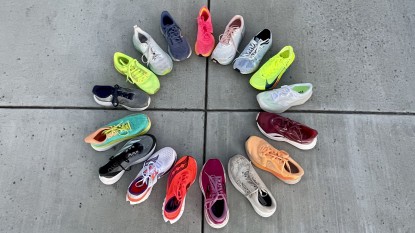Hoka OneOne Conquest - Women's Review
Our Verdict
Our Analysis and Test Results
Hands-On Review
The Hoka Conquest dominated our rankings for landing comfort and durability. This is exactly as intended by the shoe's designers; Hokas are built to provide double the midsole cushioning to protect the body from impact. Hoka believes the additional cushioning reduces fatigue from longer, more intense runs. Secondly, the design decreased the drop in the sole and added a rocker to provide a guided gait foot cycle. If you like how this sounds but prefer to run off road, check out our review of the trail worthy women's Hoka Stinson.
With top metrics in one category, we usually see a trade-off in another. Hokas are no exception; we found the weight and fit to be the biggest detractors in the Conquest model. If you like the idea of a heavily cushioned shoe with more balanced scores and a gender-specific fit, look at the Asics Gel Kayano 21.
Responsiveness
With double cushioning, the Hoka Conquest had the effect of deadening our foot sensitivity and range of motion more significantly than any of the other shoes we reviewed. To combat this effect, the Hoka team utilizes an early-stage meta-rocker positioned behind the metatarsal heads that works like a fulcrum to transition the foot quickly to toe-off. They also use their firmer and more responsive RMAT cushioning in the Conquest and keep the plush EVA found in some of their other models to just a thin top layer of the midsole. These features we're not enough to bump the shoes up past a score of 5/10 in responsiveness.
Landing Comfort
Bombing hills in the Conquests is just plain fun. The stellar shock absorption properties of the RMAT midsole really allow you to attack descents, and the rocker shines in this context. Because the Hokas are so good at absorbing impact, we had to make a real effort to be mindful of our running form, especially on 10+ mile runs where it's already easy to get a little sloppy as we because increasingly fatigued. A perfect 10/10 goes to the Conquest for landing comfort.
Upper Comfort
Unfortunately, we found the upper of the Conquest to be quite uncomfortable. We are attributing this to the stiff mesh upper and the super hard heel counter. Hoka formed the shoe on straight men's lasts without noticeable consideration to female anatomy. A general theme across online reviews of the Hoka Conquest was that the toe box is quite narrow, which we also found to be the case. Wider sizing is unavailable in any of the Hokas, so there isn't room for securing a better fit. We experienced numbness and discomfort due to the fit in this shoe.
The gusseted, unpadded tongue is comfortable until you reach the uppermost eylets, where the tongue does not cover the whole foot and caused chafing. The thinner edges of the tongue itself can also cause some irritation. If upper comfort is of most importance to your running, look at the Saucony Virrata, which scored highest in our review.Stability
Hoka calls their shoes “inherently stable” and we can really agree with that in the context of the road. Without the rough, uneven surface of the trail to trip us up, the Conquest moves easily over the concrete and does not increase ankle torsion noticeably. This is a solid 8/10 effect of the design efforts at Hoka.
Durability
We put about 40 miles on the Conquest without noticing any degradation of the outsole or upper. The cushion just starts to relax at this point. In the Conquest, reviewers report getting two to four times the miles of traditional running shoes. The Hokas are ultra shoes, built to see you through hundreds if not a thousand miles or more.
Breathability
Although the mesh upper felt stiff, it maintained a good deal of breathability. We never felt suffocated in this shoe. The Conquest handled cold rainy days as well as warmer summer ones, making it a great choice year round.
Weight
The Conquest was the heaviest pair of shoes that we tested, coming in at 19.36oz. Although Hoka added extra weight for the extra cushioning in the Conquest, it only put them 1oz heavier than the two Asics models we reviewed. That being said, the Conquests had a tendency to feel even heavier thanks to the stiff, inflexible midsole.
Additional Design Considerations
One consideration in trying the Conquest is the fit of the Hoka Race Lace System (RLS). We felt that the thin, inflexible laces caused excessive pressure over the bridge of our foot. The RLS was also difficult to secure. We cut the laces out and replaced them with the extra traditional pair that came with the shoes. Not only did this alleviate some of the pressure we were feeling, but it also allowed us to use the uppermost eyelet to get a more secure fit. This was key for us in getting the Conquest upper to work for us.
Another consideration is the overall volume of the shoes. Due to the extra large soles, it isn't a shoe that you'll plan on wearing out casually. Another oversight of Hoka is the lack of reflective materials, despite the Conquest being a road shoe.
Best Application
The Hoka Conquest will work best for ultra runners with narrow feet — a niche group for sure. Others who might have great success with the Conquest would be those who need more support and protection from the road.
Value
At $170, the Conquest is terribly expensive for a running shoe. The materials used are of great quality and the construction is excellent, but we don't feel like they are quite worth such a steep price point.
Conclusion
The Hoka Conquest is a highly cushioned, maximalist shoe that ultra runners will just love for the durability and protection. We are excited to see where Hoka takes this model, as well as their brand, going forward. If they can address some of the fit issues we experienced, the Conquest might be a big winner.


